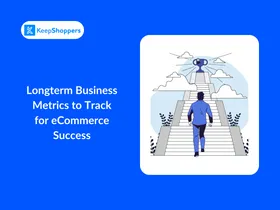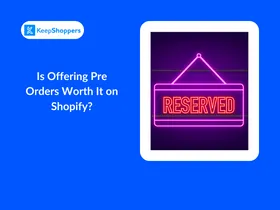How to Create an Abandoned Cart Recovery Email Campaign
Updated February 10, 2023

AI Summary
About 70% of e-commerce shoppers abandon their carts without completing the purchase. An abandoned cart is an opportunity to get the client back to the store to complete the purchase. An opportunity that shouldn't be missed.
An email campaign is one of the best tools for recovering abandoned carts. Here are some of the best practices for creating successful abandoned cart recovery email campaigns:
Try to Understand Why the Client Didn't Complete the Purchase
You should have information regarding the stage where the client dropped from checkout. So, you might have enough information to make an educated guess why the clients failed to complete the purchase.
Did the client leave after inserting his address and viewing the shipping cost? Offer him free shipping. Did he refuse to enter his credit card information? Try to build trust. If you can understand what prevented the client from completing the purchase, tailor the email to try and overcome the obstacle.
Customize the Cart Recovery Email According to Segments
Different approaches suit different clients. Customize your email campaigns according to client segments - returning client vs. first-timer, client location, product type, cart value, etc.
Include the Product Image and a Back-to-Cart Button
You know that the client was interested in a specific product. He was interested enough to add this product to his cart. Build your email around this product - include an image of the product and a back-to-cart button to let the client quickly complete his purchase.
Make it as easy as possible for the client to complete his purchase. Any hurdle is a potential cause for him to drop out again.
Create an Effective Subject Line
A well-written subject line can increase the chances that the recipient will open the email. It should be short and not spammy. Try to include the name of the client and the name of the product in the subject line.
Include Special Offers
The best practice is to include a special offer in your email campaign. Offer a special discount, free shipping, or a gift. It increases the chances that the recipient will open the email and complete the purchase.
Shipping rates are one of the top reasons for abandoning carts, so it is also one of the most effective cart recovery promotions.
You might not want to include a special offer in the first email. A special offer in the first email might cause returning clients to abandon their carts just to get the offer. The best practice is to send special offers to first-time clients or in a later email.
Time Your Emails
It is usually optimal to send the first email a few hours after the client added the product to his cart. You don't want to send the email too soon because the client might still complete the purchase on his own. At the same time, you want to send it fast enough when it is still very relevant.
Use a Set of Emails
A set of two or three emails is the best practice for abandoned cart recovery campaigns and should lead to optimal results. Your goal should be to maximize your sales without irritating your potential clients. In any case, you should always test it yourself to find out what works best for your store.
Here is a popular general flow to start with -
1. First Email - A friendly reminder
Reminds the client that he left a product in the cart. Should do the job if the client just got distracted. Best to send a couple of hours after the client added the product to his cart.
2. Second Email - Create a sense of urgency
Let the client know that the product might get sold out. Invite him to contact you for help. Best to send one to two days after the first email.
3. Third Email- Offer a promotion
A promotion offer might be that final push the client needs. Best to send one to two days after the second email.
Measure Performance and a/B Test
Abandoned cart recovery email campaigns can be very useful in boosting your sales. Like any marketing activity, there is no one-size-fits-all. The best practices should give you an excellent place to start with. The key is to measure the performance and A/B test to optimize the results of your email campaign.





